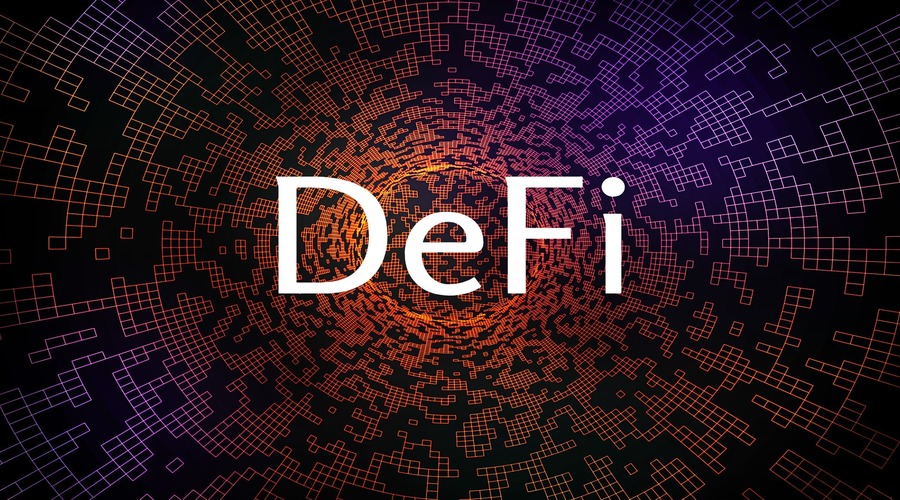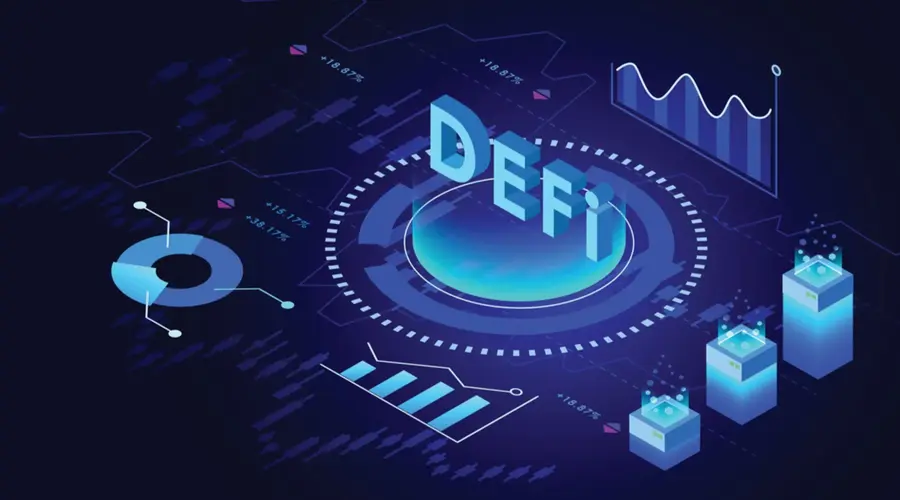The Potential Impact of DeFi on Traditional Banking Systems

The Potential Impact of DeFi on Traditional Banking Systems
Introduction
In recent years, the emergence of Decentralized Finance (DeFi) has disrupted the traditional banking landscape. DeFi refers to a blockchain-based financial system that allows individuals to access financial services without the need for intermediaries like banks. This article explores the potential impact of DeFi on traditional banking systems and discusses the advantages, disadvantages, and regulatory challenges associated with this revolutionary technology.
Understanding DeFi
DeFi, short for Decentralized Finance, is a term used to describe a wide range of financial applications and services built on blockchain technology. Unlike traditional banking systems, which rely on centralized institutions to facilitate transactions, DeFi operates on a decentralized network of smart contracts. These smart contracts are self-executing agreements that automatically execute transactions when predetermined conditions are met.
How Does DeFi Work?
DeFi platforms are powered blockchain technology, most commonly using Ethereum as the underlying blockchain. Participants interact with DeFi protocols connecting their digital wallets to the platform. This allows them to lend, borrow, trade, and invest in various decentralized applications (DApps) within the DeFi ecosystem. Smart contracts govern these transactions, ensuring transparency, security, and immutability.
Advantages of DeFi
- Financial Inclusion: DeFi opens up financial services to a broader population, including the unbanked and underbanked. Individuals who lack access to traditional banking services can now participate in decentralized lending, borrowing, and investment opportunities.
- Accessibility and Convenience: DeFi eliminates geographical barriers and the need for intermediaries, enabling anyone with an internet connection to engage in financial activities. Users can access DeFi platforms 24/7, without the limitations of traditional banking hours.
- Transparency and Security: DeFi transactions are recorded on the blockchain, providing transparent and immutable transaction histories. Additionally, DeFi protocols use advanced cryptography and smart contract technology, making them inherently secure against fraud and hacking.
- Disintermediation: By removing intermediaries, DeFi minimizes the need for trust in financial transactions. Users can directly interact with protocols, reducing costs and improving efficiency.
- High Potential Returns: DeFi offers various opportunities for users to earn passive income through lending, staking, yield farming, and liquidity provision. These activities often provide higher returns compared to traditional banking products.
Disadvantages of DeFi
- Volatility and Risk: DeFi markets can be highly volatile, subjecting participants to substantial financial risks. Rapid price fluctuations and smart contract vulnerabilities can result in significant financial losses.
- Lack of Regulation: Unlike traditional banking, DeFi operates in a relatively unregulated environment. This lack of regulation raises concerns about investor protection, market manipulation, and compliance with anti-money laundering (AML) and know-your-customer (KYC) regulations.
- Smart Contract Vulnerabilities: DeFi applications heavily rely on smart contracts, which can be susceptible to coding errors and vulnerabilities. Exploitation of these vulnerabilities can lead to loss of funds and user trust.
- Limited User Support: While DeFi offers various user-friendly interfaces, the technology can still be complex for the average user. Additionally, due to the decentralized nature of DeFi, there is often limited customer support available in case of issues or disputes.
- Complexity and Learning Curve: Engaging with DeFi requires users to understand blockchain technology, digital wallets, private keys, and the mechanics of different protocols. This learning curve can be a barrier for mainstream adoption.

DeFi and Traditional Banking: A Comparison
- Centralization vs. Decentralization: Traditional banking systems rely on centralized authorities, such as banks and regulatory bodies, to control and facilitate financial transactions. DeFi, on the other hand, operates on a decentralized network, removing the need for intermediaries.
- Control and Ownership: In traditional banking, individuals rely on financial institutions to hold and manage their funds. In DeFi, individuals retain full control and ownership of their assets since transactions are executed directly through smart contracts.
- Intermediaries and Middlemen: Traditional banking involves intermediaries, such as banks, brokers, and payment processors, who facilitate transactions. DeFi eliminates or reduces the need for these intermediaries, enabling peer-to-peer transactions.
- Transaction Speed and Cost: Traditional banking transactions can be slow and involve various fees. DeFi transactions, on the other hand, can be executed quickly and often with lower transaction costs, thanks to the elimination of intermediaries.
- Privacy and Confidentiality: Traditional banks collect and store sensitive customer information, which can be susceptible to data breaches. DeFi, with its focus on privacy-enhancing technologies, allows users to maintain control over their personal data.
Potential Impact on Banks
- Disruption of Traditional Banking Services: DeFi poses a significant threat to traditional banking services providing more accessible and inclusive financial solutions. With DeFi’s ability to offer competitive interest rates and innovative products, traditional banks may lose customers and revenue streams.
- Redefining the Role of Banks: Traditional banks may need to adapt their business models to incorporate decentralized technologies. They can explore collaborations with DeFi platforms or develop their own blockchain-based solutions to stay relevant in the evolving financial landscape.
- Enhanced Competition and Innovation: DeFi’s disruptive nature encourages traditional banks to innovate and improve their offerings. Increased competition can lead to better financial products, improved customer experiences, and lower costs for consumers.
- Cost Reduction and Efficiency: DeFi’s automation and removal of intermediaries can significantly reduce operational costs for financial services. Traditional banks may adopt DeFi technologies to streamline their processes and increase efficiency.
- Collaborative Opportunities: Rather than perceiving DeFi as a threat, traditional banks can explore partnerships and collaborations with DeFi platforms. This allows banks to leverage the benefits of DeFi while utilizing their existing infrastructure, regulatory expertise, and customer base.
Regulatory Challenges
- Regulatory Framework Adaptation: Regulators face the challenge of adapting existing financial regulations to encompass the rapidly evolving DeFi space. They need to strike a balance between fostering innovation and ensuring consumer protection and market integrity.
- Anti-Money Laundering (AML) and Know Your Customer (KYC): DeFi’s pseudonymous nature makes it challenging to enforce AML and KYC regulations effectively. Regulators are exploring solutions to address these compliance concerns without stifling innovation.
- Consumer Protection: DeFi users may face risks such as scams, hacks, or loss of funds due to technical vulnerabilities. Regulators need to establish frameworks to protect consumers and provide mechanisms for dispute resolution.
- Data Privacy and Security: As DeFi platforms handle sensitive user data, regulators must ensure proper data privacy and security measures are in place. Encryption, secure storage, and consent-based data sharing practices should be encouraged.
- International Cooperation: DeFi operates on a global scale, making international cooperation essential for regulatory oversight. Regulators need to collaborate to establish harmonized standards and facilitate cross-border enforcement actions.
Collaboration or Competition?
- Exploring Partnerships: Traditional banks can explore partnerships with DeFi platforms to leverage the benefits of decentralized technologies. These partnerships can help bridge the gap between traditional finance and DeFi, providing customers with innovative and secure financial services.
- Integrating DeFi into Traditional Banking: Some traditional banks may choose to integrate DeFi solutions into their existing infrastructure. This integration can enhance efficiency, reduce costs, and offer customers access to DeFi features while maintaining regulatory compliance.
- Competing with DeFi: Traditional banks can choose to compete with DeFi platforms developing their own blockchain-based solutions. By leveraging their brand recognition, customer trust, and regulatory compliance, banks can offer alternative decentralized financial services.
- Hybrid Models: Hybrid models that combine the strengths of traditional banking and DeFi can also emerge. Banks can integrate DeFi functionalities into their existing systems, creating a seamless user experience that benefits from both centralized and decentralized elements.
DeFi’s Future
- Scalability Solutions: DeFi faces scalability challenges due to the limitations of existing blockchain networks. Layer 2 solutions and other scaling techniques are being developed to improve transaction throughput and reduce costs.
- Interoperability and Standardization: Interoperability between different DeFi protocols and blockchain networks is crucial for the continued growth and adoption of DeFi. Standardization efforts aim to create interoperable frameworks that facilitate seamless interaction between various platforms.
- Mainstream Adoption: DeFi is still in its early stages, and widespread adoption is yet to be realized. However, as user-friendly interfaces and regulatory frameworks improve, more individuals and institutions are expected to embrace decentralized finance.
- Integration with Web 3.0: DeFi is closely tied to the concept of Web 3.0, which envisions a decentralized internet powered blockchain and other decentralized technologies. DeFi will likely play a significant role in the development of Web 3.0 applications and services.
- Evolution of DeFi Platforms: DeFi platforms will continue to evolve, offering new financial instruments, enhanced security measures, and improved user experiences. Innovation will drive the growth of DeFi, enabling it to become a mainstream alternative to traditional banking systems.
Conclusion
The potential impact of DeFi on traditional banking systems is vast and multifaceted. While DeFi offers numerous advantages such as financial inclusion, accessibility, and transparency, it also presents challenges related to regulation, security, and user support. Traditional banks must navigate this rapidly evolving landscape either collaborating with or competing against DeFi platforms. Regulatory frameworks need to adapt to foster innovation while safeguarding consumer protection. The future of DeFi holds exciting possibilities, with scalability solutions, interoperability, and mainstream adoption on the horizon.
FAQs
FAQ 1: Is DeFi safe to use?
Answer: While DeFi offers advanced security measures through smart contracts and cryptography, there are still risks associated with using DeFi platforms. Users must exercise caution, conduct thorough research, and understand the risks involved before participating in DeFi activities.
FAQ 2: Can traditional banks benefit from DeFi?
Answer: Yes, traditional banks can benefit from DeFi exploring partnerships, integrating DeFi solutions, or developing their own blockchain-based platforms. By leveraging the advantages of DeFi, banks can enhance their services, reduce costs, and stay competitive in the evolving financial landscape.
FAQ 3: How can regulators keep up with DeFi?
Answer: Regulators face the challenge of adapting existing regulations to encompass the unique characteristics of DeFi. They can establish collaborative frameworks, foster international cooperation, and work closely with industry stakeholders to develop regulatory guidelines that promote innovation while ensuring consumer protection and market integrity.
FAQ 4: What are some popular DeFi platforms?
Answer: Some popular DeFi platforms include Uniswap, Compound, Aave, MakerDAO, and SushiSwap. These platforms offer a range of decentralized financial services such as decentralized exchanges, lending and borrowing protocols, and yield farming opportunities.
FAQ 5: Will DeFi replace traditional banks?
Answer: While DeFi has the potential to disrupt traditional banking systems, it is unlikely to completely replace them in the near future. DeFi and traditional banks can coexist, with banks adapting their business models to incorporate decentralized technologies and offer innovative financial services to their customers.
I’ve been involved with cryptocurrency for three years. I have been a vocal advocate for the people and an active part of the community. I am well-known for my book “Crypto Revolution: An Insider’s Guide to the Future of Money” and blog “The Crypto Chronicles.” In addition, I frequently contribute to CoinDesk, one of the top news websites for cryptocurrencies. I write as well as invest actively in a number of bitcoin initiatives.
